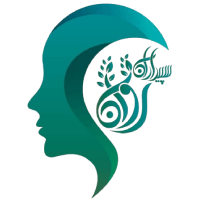
Blog
Dimensions of anger in society

When you start to browse through the pages of history and examine figures such as Genghis Khan, Hulagu Khan, Hitler, Mussolini, Saddam, and others, you come across a particular way of thinking and worldview based on institutionalizing anger in society.
To better understand this issue, we refer to the famous experiment conducted at Stanford University by Dr. Philip Zimbardo. In this experiment, students were divided into two groups: the first group was assigned the role of prison guards, and the second group the role of hypothetical prisoners. The experiment was supposed to last two weeks, but after just three days, surprising results emerged showing that the first group exhibited strangely violent and sadistic behaviors and began to abuse and torture the hypothetical prisoners. This experiment, which was planned for two weeks, was stopped on the sixth day due to severe violence and harmful behaviors.
In another study, pilots who had undergone special training were quarantined on a deserted island devoid of any human civilization for several days and asked to survive and manage on their own by any means possible. After a few days, the pilots reported that due to hunger, they had contemplated attacking their fellow colleagues and feeding on their flesh. This issue can be explained by the fact that the brains of these individuals, due to starvation, had regressed to animalistic levels below the neocortex.
This indicates that if the neocortex of humans is removed, they will be driven by two main impulses: lust and anger. Both of these impulses serve survival and provide limited pleasure.
فهرست عناوین
Toggle
Reasons for Anger in Society
How can the human brain be reduced to an animalistic level?
Since it is not possible to physically remove the human neocortex, a series of actions can mentally bring a person down to an animalistic level and keep them there. This article will address some of these factors.
Extreme Ideology
In the Bosnian War, horrific massacres occurred due to extremist thoughts and fanatical ideologies, whose bitter effects have remained in history.
Another example is Hitler and the Nazi ideology, which resulted in the death and displacement of thousands of people around the world. Research on Hitler’s personality shows that he was angry at himself and this anger had multiple causes. The impact of this factor can also be seen in some other extremist groups, where individuals, even with university degrees and awareness of the group’s goals and actions, join and contribute to large-scale inhumane phenomena. These cases are clear and vivid examples of the influence of ideology on deep human emotions and consequently the occurrence of large-scale violence.
Suggested article: Anger in children and adolescents
Racism
Racism can also lead to aggressive behavior against others because it is rooted in a hostile attitude. Since racism stems from prejudice and inflexibility, whenever an individual or group allows their fanatical beliefs to hinder the growth and progress of others and becomes a cause of social deprivation for them, racial discrimination — a form of aggressive behavior — occurs.
Anthony Giddens, the British sociologist, distinguishes between prejudice and discrimination. Prejudice may exist in a person’s mind, where they consider themselves superior to members of another group or race, but discrimination is when that prejudice turns into behavior and causes a race to be held back.
In fact, racism annually leads to aggression, crimes, and even the deaths of many minorities.
Alcohol
Alcohol consumption creates and triggers the grounds for aggressive behavior. Wolfgang’s studies on crime and murderers showed that 55% of criminals had consumed alcohol. Due to the mechanism alcohol creates in the brain, it causes overlooking and distancing from cultural rules and societal norms, significantly increasing deviant behaviors. A continuously rising blood alcohol level impairs information processing and logical reasoning, which can lead to aggressive and violent behaviors in society. On the other hand, addiction to drugs, alcohol, and hallucinogens affects brain function and transforms individual behavior into violent and aggressive conduct.
Suggested article: Substance Use Disorder

The Role of Society and Culture in Anger
By studying history, it becomes evident that violence of all kinds has been a common feature of various societies throughout human history. Awareness of history shows that across all nations, religions, ethnicities, and different geographical locations, phenomena of this nature have been observed, all revolving around anger and aggressive instinct. Therefore, understanding different societies requires knowledge and mastery of their behavioral sciences, as behavioral sciences vary from one society to another and from one culture to another.
A broad observation reveals that in any country, every ethnicity and culture has its own norms and behaviors, and the manifestation of anger in each nationality aligns with that nation’s culture. Violence is a deeply social phenomenon whose intensity differs among various societies and cultures. According to some studies, anger expression is higher in certain ethnicities and nations compared to others; however, no definitive and conclusive results have yet confirmed this hypothesis.
برای مشاوره رایگان و رزرو وقت (یا اگر تماس گرفتید و قادر به پاسخگویی نبودیم) شماره تماس خود را وارد کنید. ما به زودی با شما تماس می گیریم!



